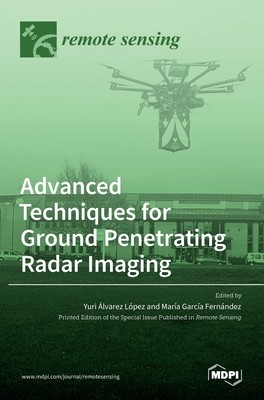
- We will send in 10–14 business days.
- Publisher: MDPI AG
- ISBN-10: 3036521496
- ISBN-13: 9783036521497
- Format: 17 x 24.4 x 1.9 cm, hardcover
- Language: English
- SAVE -10% with code: EXTRA
Advanced Techniques for Ground Penetrating Radar Imaging (e-book) (used book) | bookbook.eu
Reviews
Description
Ground penetrating radar (GPR) has become one of the key technologies in subsurface sensing and, in general, in non-destructive testing (NDT), since it is able to detect both metallic and nonmetallic targets. GPR for NDT has been successfully introduced in a wide range of sectors, such as mining and geology, glaciology, civil engineering and civil works, archaeology, and security and defense.
In recent decades, improvements in georeferencing and positioning systems have enabled the introduction of synthetic aperture radar (SAR) techniques in GPR systems, yielding GPR-SAR systems capable of providing high-resolution microwave images. In parallel, the radiofrequency front-end of GPR systems has been optimized in terms of compactness (e.g., smaller Tx/Rx antennas) and cost. These advances, combined with improvements in autonomous platforms, such as unmanned terrestrial and aerial vehicles, have fostered new fields of application for GPR, where fast and reliable detection capabilities are demanded. In addition, processing techniques have been improved, taking advantage of the research conducted in related fields like inverse scattering and imaging. As a result, novel and robust algorithms have been developed for clutter reduction, automatic target recognition, and efficient processing of large sets of measurements to enable real-time imaging, among others.
This Special Issue provides an overview of the state of the art in GPR imaging, focusing on the latest advances from both hardware and software perspectives.
EXTRA 10 % discount with code: EXTRA
The promotion ends in 16d.23:38:58
The discount code is valid when purchasing from 10 €. Discounts do not stack.
- Publisher: MDPI AG
- ISBN-10: 3036521496
- ISBN-13: 9783036521497
- Format: 17 x 24.4 x 1.9 cm, hardcover
- Language: English English
Ground penetrating radar (GPR) has become one of the key technologies in subsurface sensing and, in general, in non-destructive testing (NDT), since it is able to detect both metallic and nonmetallic targets. GPR for NDT has been successfully introduced in a wide range of sectors, such as mining and geology, glaciology, civil engineering and civil works, archaeology, and security and defense.
In recent decades, improvements in georeferencing and positioning systems have enabled the introduction of synthetic aperture radar (SAR) techniques in GPR systems, yielding GPR-SAR systems capable of providing high-resolution microwave images. In parallel, the radiofrequency front-end of GPR systems has been optimized in terms of compactness (e.g., smaller Tx/Rx antennas) and cost. These advances, combined with improvements in autonomous platforms, such as unmanned terrestrial and aerial vehicles, have fostered new fields of application for GPR, where fast and reliable detection capabilities are demanded. In addition, processing techniques have been improved, taking advantage of the research conducted in related fields like inverse scattering and imaging. As a result, novel and robust algorithms have been developed for clutter reduction, automatic target recognition, and efficient processing of large sets of measurements to enable real-time imaging, among others.
This Special Issue provides an overview of the state of the art in GPR imaging, focusing on the latest advances from both hardware and software perspectives.


Reviews